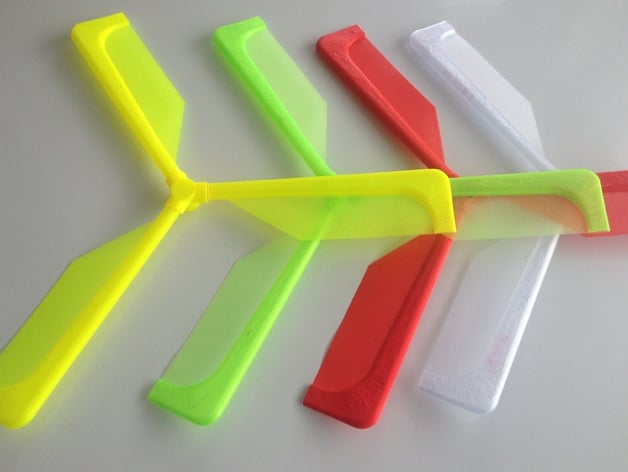
A Balloon Powered Helicopter
thingiverse
The balloon helicopter toy doubles as an educational tool for teaching basic flight physics and offers a fascinating design case study. With the current best configuration at 16mm blades (blade_16.stl) and 13-degree rotor (rotor_13.stl), you can find a short flying video clip here: http://youtu.be/mo7PvU1rNRc. If interested in commercial balloon helicopters, consider these options: https://amzn.to/2oTZnuY or this set: https://amzn.to/2wW9x1r. To assemble, insert the three blades into the rotor, fill a balloon with air and attach it to the nozzle of the rotor while pinching off the end for a straight fit. A little spin can help with launching. This project requires only printable components and a balloon; it was developed on a MakerBot Replicator 2 using PLA, but should work on other printers too. Key factors include a flat build plate for thin (0.1mm) films to reduce weight. The design process involved five major revisions for optimal flight and experimentation with various surface profiles, wall thicknesses, geometry, build parameters, etc. STL files for different blades and rotors are included for your own experiments. While the design files aren't extensively documented, basic SolidWorks skills should help you navigate them. For printing, use high-quality settings with 0.1mm layers, 1 shell, and 100% fill for blades and rotor, switching to 0% fill for the nozzle. Ensure a level build platform using a glass plate and painter's tape. Assemble the blades and rotor, securing with glue if needed, and hold them together firmly. The printed parts should weigh approximately 11g. Blade STL file names indicate the outlet opening width, while rotor files show the angle of attack. Do not glue the nozzle to the rotor; instead, insert it into the balloon for optimal flight without twisting shut due to torque from the blades. Happy flying!
With this file you will be able to print A Balloon Powered Helicopter with your 3D printer. Click on the button and save the file on your computer to work, edit or customize your design. You can also find more 3D designs for printers on A Balloon Powered Helicopter.
